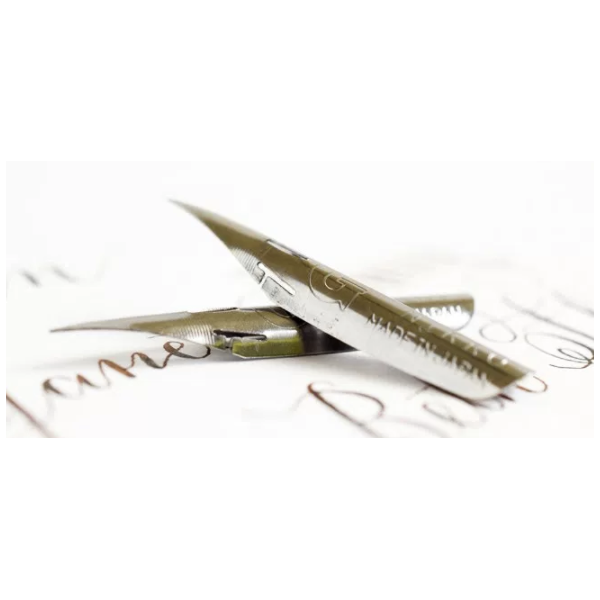Have you ever wondered how to expand the flow of ink through quill nibs? When you use a quill nib in an Ackerman pen, such as a Crowquill or Hawk quill, the ink must travel down the center tube. Air flowing back into the reservoir must flow past the ink in the other direction. All of this occurs in the constricted quill tube, and when it works correctly, the ink emerges at the narrow air hole near the tip of the nib.

That's asking a lot from your pen. To compensate for the constricted flow channel, we recommend two things that can improve the quality of your ink flow:
- Use the Pump Pen instead of the Fountain Pen
- Expand the air hole in quill nibs
Using the Pump Pen instead of the Fountain Pen
We recommend that you use a pump pen when drawing with quill nibs. This lets you press the pump and force more ink through the nib.
You can still use our Crowquill Fountain Pen, which doesn't provide the pump, for thinner inks. In this case, you can rely on gravity flow to be sufficient.
Expanding the Air Hole in Quill Nibs
Another thing you can do to offset the constrained ink flow is to expand the size of the air hole in the quill nib so the flow of ink and air is less constrained. The picture below shows two Hunt 102 crowquills, with the top nib showing an expanded air hole.

The bottom crowquill contains the original unexpanded air hole.
Warning: This procedure can change the behavior of your quill nibs. With practice and experimentation, you can find the sweet spot that expands the flow but does not change the behavior.
When you slide the modified crowquill into our pens, it looks like that shown below.

The expanded air hole permits an easier flow of ink and air.
You can expand the air hole in your quill nibs using several different tools. The best is a narrow round needle or taper file used by jewelers. Slide the tip of the file into the air hole and gently spin the file as you press the file further into the air hole. Be careful. The metal used for quill nibs is very thin. It doesn't take much to wear away enough material to expand the hole. Also make sure you don't expand the hole too far and breach one side of the nib
You can also use jeweler's drills in the same manner. If you don't have access to fine jewelers drills, you can buy a small drill bit at your local hardware store. Start with a standard drill size of 76 or lower. The drill bit should measure 0.20" or smaller. Slide the tip of the drill into the air hole and then spin the drill slowly between your fingers. Move the drill back and forth to create a more circular air hole. You can also expand the air hole for its entire length if that works better for you.
Cheers and Happy Scribbling!



